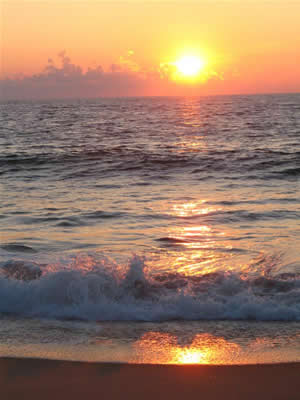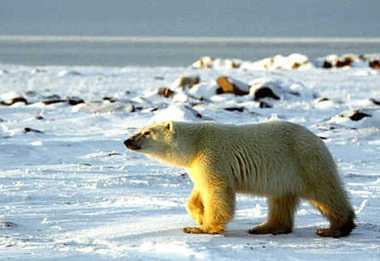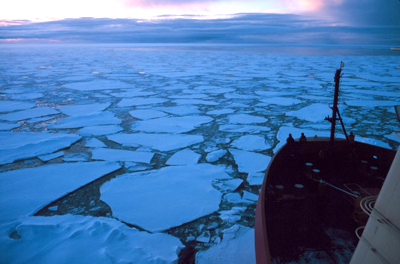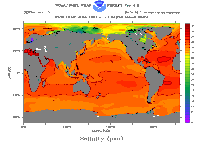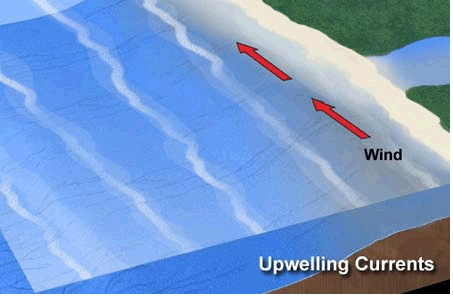Click on image for full size
Courtesy of UCAR
Related links:
Coral Reefs in a Changing World
Rock Eating Bacteria Found at the Bottom of the Sea
Acid Rain Has Greater Impact on Coastal Ocean Waters
Earthquakes Under Pacific Ocean Floor Reveal Unexpected Circulation System
Exploring Density with Salt and Fresh Water: Par 5
Thermal Expansion and Sea Level Rise
Ducks in the Flow: Ocean Education Resources
Exploring Ocean Dead Zones video
Earth's Ocean
Earth's ocean covers more than 70% of our planet's surface. There are five major ocean basins. The Pacific Ocean is the largest. It’s so large that it covers a third of the Earth's surface. The Atlantic Ocean is east of the Americas and west of Europe and Africa. The Indian Ocean is south of Asia and the Middle East and east of Africa. The Arctic Ocean is in the north polar region. The Southern Ocean surrounds Antarctica in the south polar region.
Seawater is salty. Anyone who has taken a gulp of water while swimming in the ocean knows that. Salinity is the saltiness of the water. Scientists can measure salinity of seawater as well as its density and temperature using an instrument called a CTD. Overall, the chemistry of the seawater depends on the minerals and gases that become dissolved in it over time.
Ocean water is always moving. Water is transported around approximately the upper 400 meters of the ocean by surface ocean currents, which can form eddies that spin off the main currents. Water is also moved by upwelling, a process that brings water from the deep ocean to shallow areas, as well as downwelling, a process that sends water from the surface to the deep ocean. Currents along coastlines move water as well as sand. Moving water transports heat from the Sun around the planet, which has an effect on climate. Complex climate models called coupled ocean-atmosphere models take into account both the dynamics of the atmosphere and the ocean to more accurately portray how the Earth works.
Each day ocean water moves with the tides, changing where the water meets the shore in an endless cycle. Tidal cycles are perhaps most obvious at estuaries. The ocean's tides are one type of tide created by gravitational force. As well as moving around the ocean basins, water also moved in and out of the ocean through the water cycle.
Over long timescales water circulates from the deep ocean to shallow areas and back again to the deep. This circulation of seawater is called the global ocean conveyor or thermohaline circulation. As Earth’s climate warms the global ocean conveyor might change its pattern.
The height of the ocean surface is called sea level. Over a long time, sea level can change for a number of reasons. Today sea level is rising rapidly as Earth’s climate warms. This is because melting glaciers and ice sheets are adding water to the oceans and because ocean water expands as it warms.
Coral reefs are affected as the ocean changes because of global warming and other changes such as pollution. As the greenhouse gas carbon dioxide becomes dissolved in seawater the ocean becomes more acidic, which is harmful to corals and other marine life.


